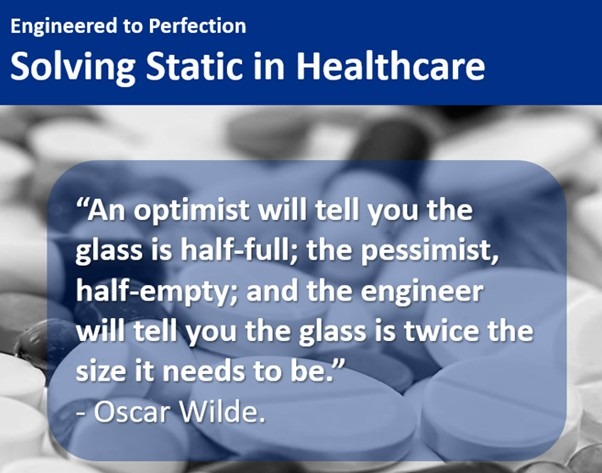Each month we illustrate, with a case study, how our engineering team and staff develop products that enhance customers’ manufacturing or industrial processes. Our well-engineered solutions improve profitability, safety, and quality through static management, web cleaning, and air technology.
This month we feature a visit to a healthcare manufacturer, part of a typical day for Alex Clinkard, Strategic Accounts Business Development Manager.
“I headed a team from Meech visiting a healthcare manufacturer whose syringe packaging machinery had started misaligning the seals on containers.
“With medical seals, it’s crucial that they’re in the right place to maintain the hygienic integrity of the product,” Alex explains. “Any slight misalignment will mean the product is rejected at quality control and this has a big effect on profit and efficiency.”
This site already had Meech static management equipment in place to tackle the bulk of the charges created from the pots entering the machine via a scramble unit. There was also static control at the exit of the machine to ensure product was statically neutral when complete, to avoid dust attraction and operator shocks when packing. A new problem had developed though on the line with the seals.
“It was assumed the problem was static because static, like a dark art, is something you can’t see. All you see is something starting to go wrong, particularly over time when a machine has been running for a while. Once you have misalignment or product misbehaviour it leads you to think of static, so that’s why we were called in.”
The Meech team took photos and videos of what was happening, allowing Alex to put the challenge to a wider team of engineers to explore the problem from every angle.
“In a complex process the challenge can often be where to put our equipment. For example, I initially suggested positioning an ionising bar near an inspection camera to neutralise the static charge on the surface as it reached the sealing point. Nearby metal work was a concern, however, as this could act as a ground reference for any ionisation bar and prevent it working. After watching video footage of the process together with our technical support manager, we managed to identify a small space which allowed the best possible exposure time to the material, neutralising the seal itself and without interfering with the process,” Alex explains.
“My role is to find the best solution for the customer and keep them informed of any progress. It’s an extremely satisfying role, always changing and different. There is a lot to learn about static, but I’m entirely confident that we can find the best solutions with the experience we have as a team at Meech.”
“I was attracted to come here because it seemed to be a smaller, friendly company with a good structure and training. The first week of training was absolutely mind-blowing, because it’s not small and there’s so much going on. It feels like a friendly, family-run business because of the easy communication and teamwork, but I quickly discovered that Meech is a global business and no two days are the same…”
After an initial few months gaining experience in the fundamentals of static control, web cleaning and air technology, Alex began to get more involved with customer and distributor applications. “By seeing and experiencing first-hand applications, you quickly learn where Meech are able to help in the production process,” he said.
To learn more about Meech’s solutions for the healthcare and pharmaceutical industry, please look on these pages: medical manufacturing
If you have a manufacturing issue you suspect may be cause by static, please do contact Alex Clinkard for a discussion or free site audit: Alex.Clinkard@meech.com


